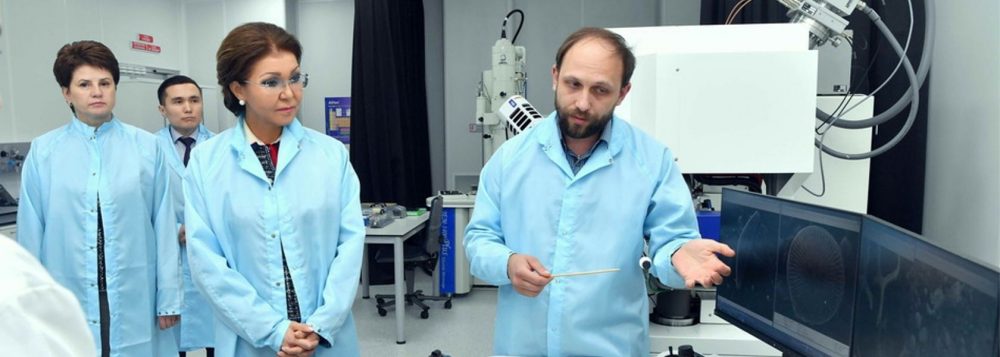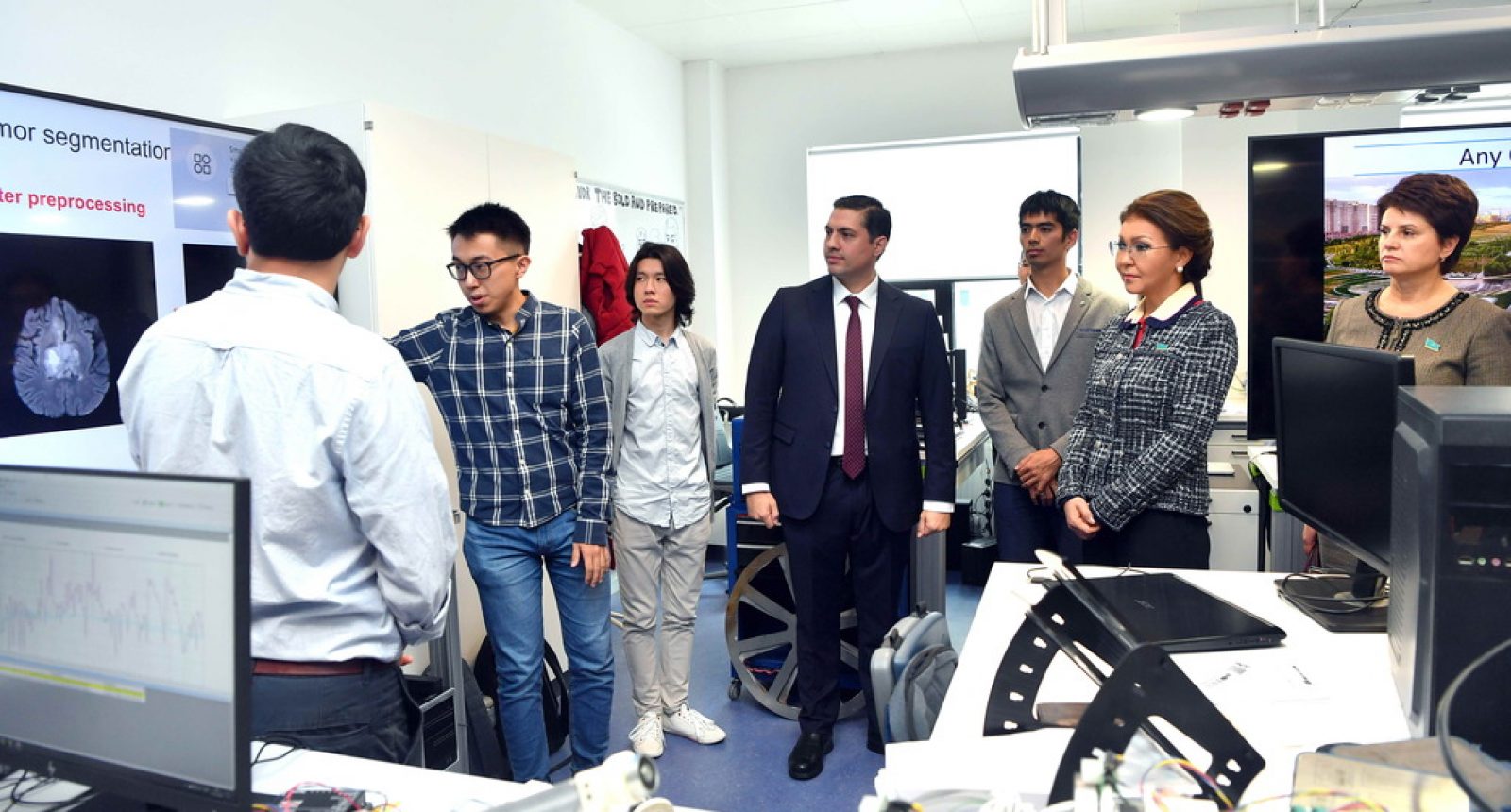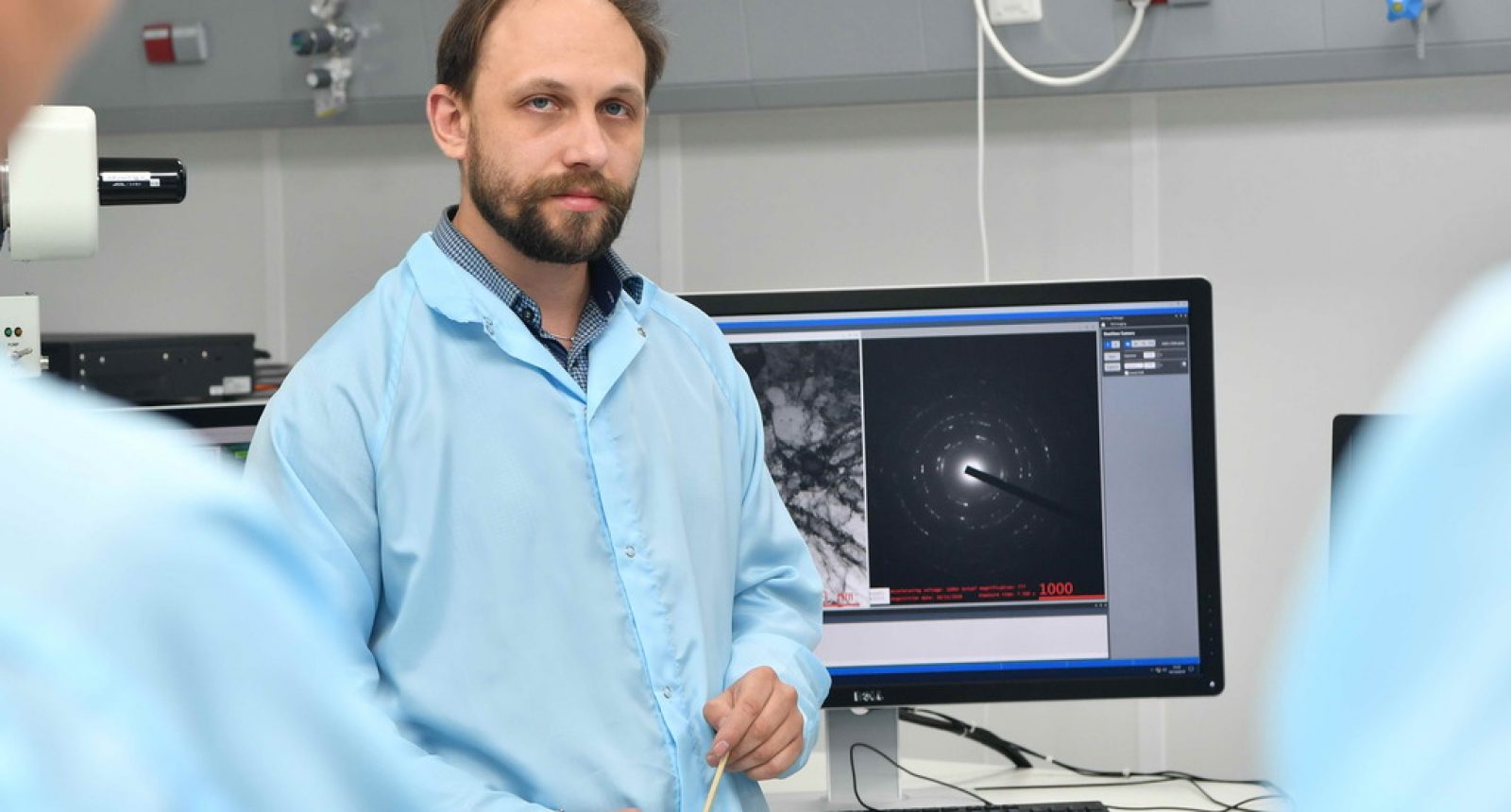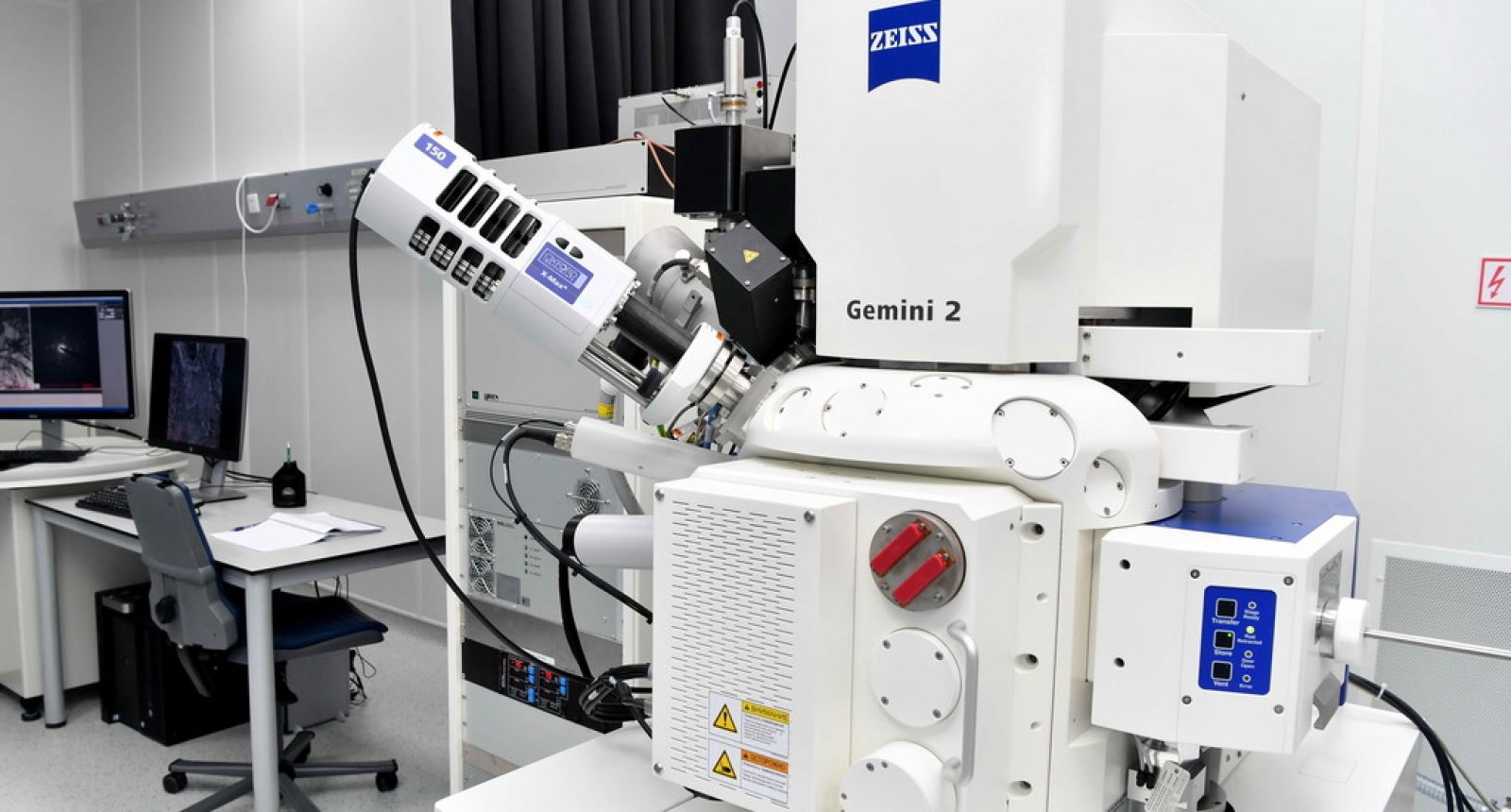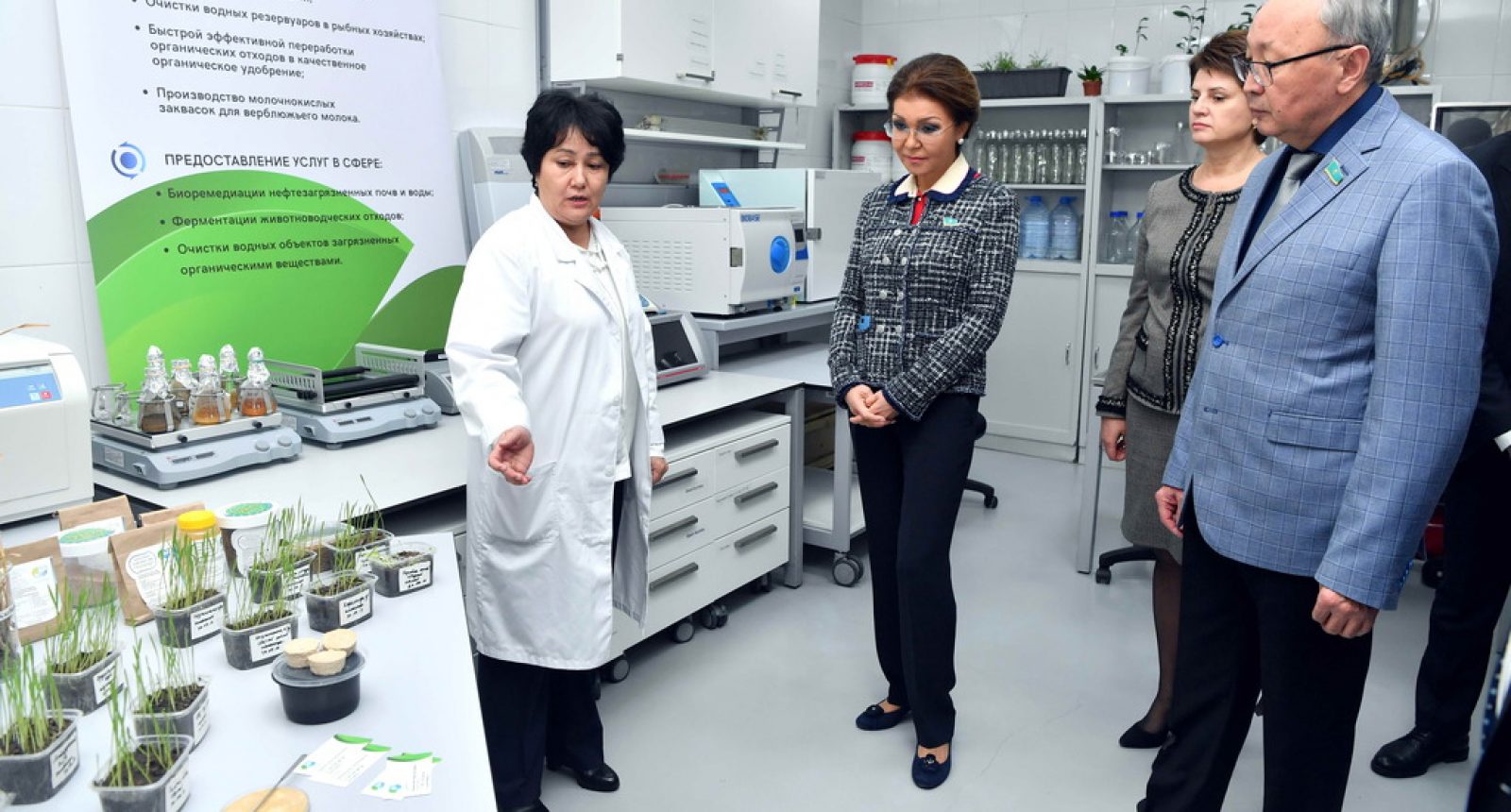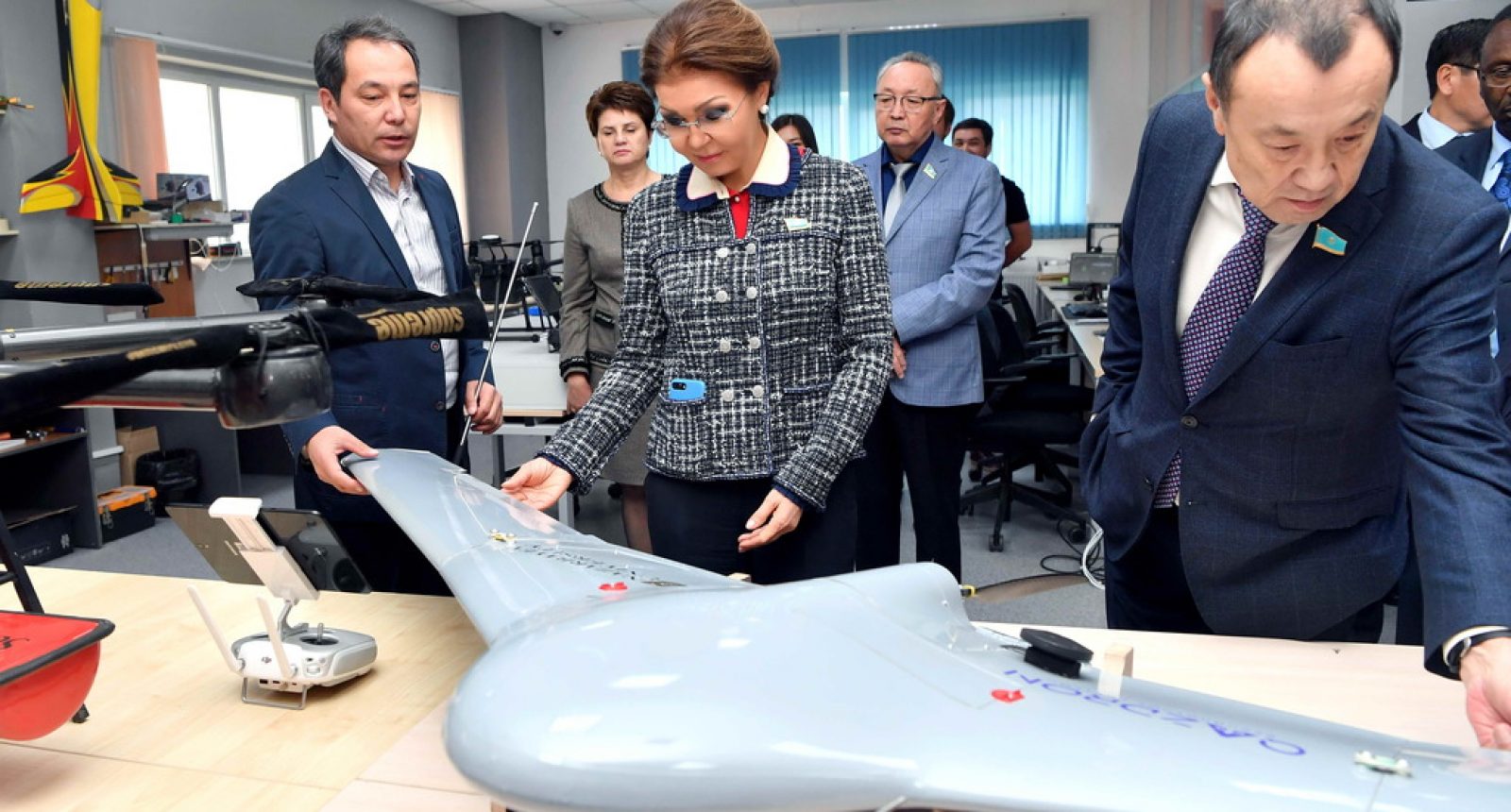Kazakhstani senators visited Nazarbayev University
Nazarbayev University was visited by members of the Senate headed by Dariga Nazarbayeva. The deputies learned about the university’s academic and scientific activities, and about the projects of the NU Innovation Cluster.
During this meeting, the President of Nazarbayev University Shigeo Katsu reported that the ideas and projects of NU students are already being used at various external agencies and governmental organizations. Several dozen important scientific developments by NU researchers have already been successfully implemented in the fields of medicine, ecology, science, education, and security.
Senate members toured the Electron Microscopy Laboratory and saw microscopes used to conduct comprehensive analyses of a wide variety of materials and samples. The technology is essential for scientists working across the university in fields such as medicine, biology, physics, chemistry, materials science, geology, nanotechnology, and even archaeology.
Alexander Arbuz, the coordinator of the research infrastructure of the Shared Office, spoke about the laboratory’s current projects. These include research on the biodiversity of diatom algae in the Balkhash region, the development of a new generation of electrodes for lithium-ion batteries, a study on kidney tissue using biopsy samples taken from children, and a joint project with ERG to detect metal residues in coal by examining the fractional and chemical composition of ash from Ekibastuz CHP.
The scientist also talked about his current project to develop a new class of radiation-resistant materials for nuclear power based on stainless steel and zirconium with an ultrafine grain structure. “The strength properties of these materials are 2.5 times higher than that of conventional materials, which is why the service life of parts made of such materials is much higher. They are intended to be used in the manufacture tubes for fuel elements of nuclear reactors into which uranium pellets are loaded. This makes it possible to increase the reliability of the most critical elements of the reactor core,” said Alexander Arbuz.
While touring the laboratories of the School of Mining and Geosciences, deputies saw a demonstration of a full-scale drilling simulator, which allows users to simulate various functions and scenarios related to the operation of a drilling rig.
“This technology helps to minimize the chances of serious damage to drilling equipment, to reduce unplanned downtime of the drilling rig, to help prevent loss of the well and future accidents,” said Gylym Sapinov, Laboratory Assistant in the Drilling Simulation Laboratory.
In the School of Mining and Geosciences, the senators were also shown equipment used in preparing samples and studying the geomechanical properties of rocks. This technology allows scientists to conduct studies on rock strength and deformation, and examine the various effects of high pressure, temperature, and rates of deformation. High-quality samples from the mineralogy collection of the School of Mining and Geosciences were also presented to the senators by Kamilya Omirzhankyzy, a second-year student of Mining Engineering.
At the Technopark, the senators viewed the projects of NU’s Innovation Cluster. The senators had a chance to talk with residents who created digital 3D-hologram technology. The technology allows users to digitize any building, and show detailed 3D-projections of both the building’s interior and exterior. The senators also learned about a company focused on environmental initiatives such as the treatment of soil contaminated with oil, and wastewater analysis.


